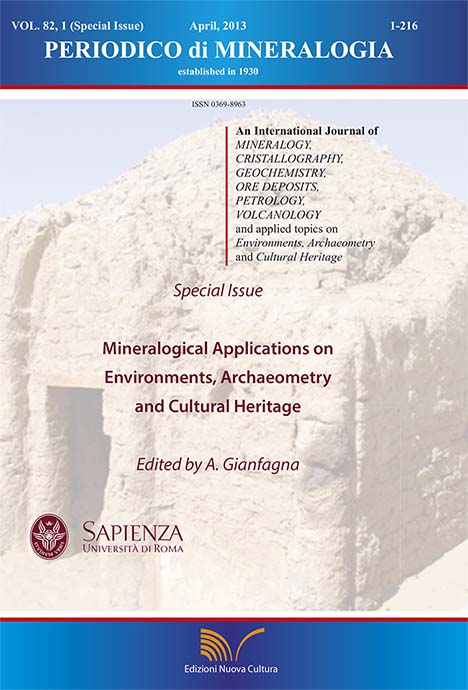Characterization of some tunisian clays to be used as antidiarrhoeic agents
DOI:
https://doi.org/10.2451/2013PM0005Keywords:
Tunisian clays, adsorption, bacteria, anti-diarrheic.Abstract
Clays are used as non-specific anti-diarrheic materials in several commercial pharmaceutics. Their employment is based on the high sorptive capacities of special clay minerals, in particular smectites and fibrous clays. This use greatly increases the value of these materials. This study was made in order to determine the possible use of some Tunisian clays for the treatment of diarrhea. With this aim, the mineralogical and chemical compositions of the studied samples were determined and subsequently, cation exchange capacities and specific surfaces areas were measured. Finally, the specific adsorption of two microorganism responsible of this disorder (Echerichia coli and Stapphylococcus aureus) was studied and compared to the adsorption of the dye (methylene blue) mainly used to quantify the ability of a pharmaceutical-grade clay as anti-diarrheic material. According to the mineralogical characterization, the studied samples contain variable amounts of phyllosilicates, with minor quantities of quartz and calcite. In particular, four samples (AYD1, AYD2, HMD1 and BRD1) are mainly made up of smectite (> 66%), whereas the rest (OMV1, SDA1, CAA1 and CBL9) are illitic and kaolinitic clays. Chemical analysis revealed relatively high contents of Fe2O3. Smectite and illite kaolinite rich samples showed, as expected, higher sorptive capacities of the studied microorganism, with values reaching 95% of Staphylococcus aureus and 65% of Escherichia coli retained after 90 minutes of interaction. These results are in agreement with those obtained with mehtylene blue, showing promising abilities of most of the studied Tunisian clays to be used in the treatment of these gastric disorders.


